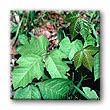How to Survive a Garden Gnome Attack
By Chuck Sambuchino
Ten Speed Press
ISBN 978-1-58008-463-5
Reviewed by Billie A Williams
“Keep reading if you want to live.” Talk about a hook. If that doesn’t get you, nothing will. Am I reading Tess Gerritsen or Stephen King? Neither. I’m reading How to Survive a Garden Gnome Attack
I have three of these little Garden Gnome predators, but they decided not to come out this year to sit in the Keebler Elves type doorway created by a major branch breaking off our willow tree. When another one quarter of this willow tree toppled in a windstorm this summer, I realized how very clever devious and clever these little Garden Gnomes have become. Sambuchino verifies my observation.
A delightful tongue in cheek, but clever look at thwarting an eventual takeover by these increasingly prolific and clever Gnomes awaits the reader. Garden Gnomes do seem to multiply. They come in various sizes and colors to fit any landscape or indoor décor.
Tidbits of ‘Gnomenclature’ (coined by Chuck Sambuchino) impart knowledge and a question in the reader’s mind –truth or "Sambuchinoed"—you might ask. An interesting trip through some natural world wonders, complete with photographs, impart wisdom, exploration and do a great job of raising the curiosity level of the reader.
This book is a delightful treatise on our penchant for collecting. It’s an innocuous, harmless habit – or is it?
Would you worry about reaching into your mailbox if you knew that, perhaps, a gnome waited there to attack that hand? Would you opt for a Post Office Box even though it cost you time, travel and money to retrieve your mail every day? See page 45. It’s scary.
Do you know how to make quick sand? See page 36, it’s for your own defense.
You know about crop circles don’t you? Do you know how they are formed? See Page 22 for insider information.
On every page there is a footer. Each footer is marked, yes by yet another infiltration of the dreaded Gnome takeover--there is a -- a pointed, little red, gnome cap. There is no escape!
You’ might laugh. You might question the sanity of the message. You will look with new eyes on that garden gnome you thought was a mere, sweet little elfin garden ornament.
I found myself wondering as I finished this marvelous small book; when will How to survive a Pink Flamingo Attack, be released?
I highly recommend this book to gnome lovers/owners everywhere. Even if you are not a gnome owner, but a gardener or have a neighbor who gardens—you need to read this book for your own protection-- or-- for a laugh a minute if you prefer humor.
Billie A Williams
http://www.billiewilliams.com
http://writingwide.com
Money Isn't Everything, Best Seller
Mystery Suspense, Wings Press











